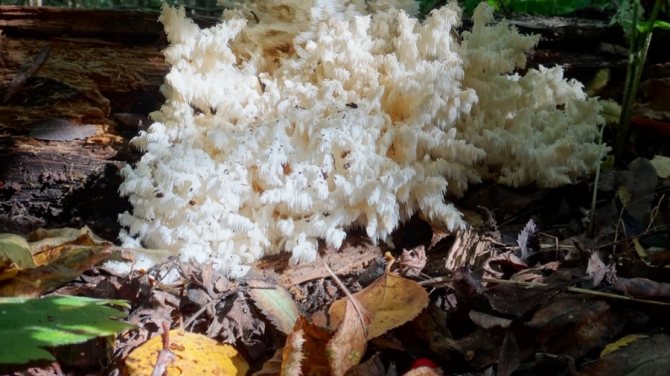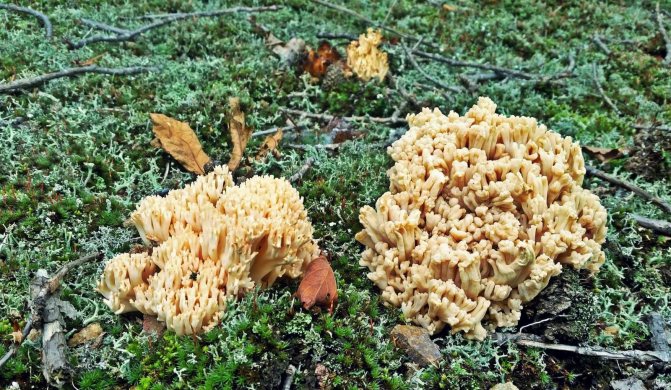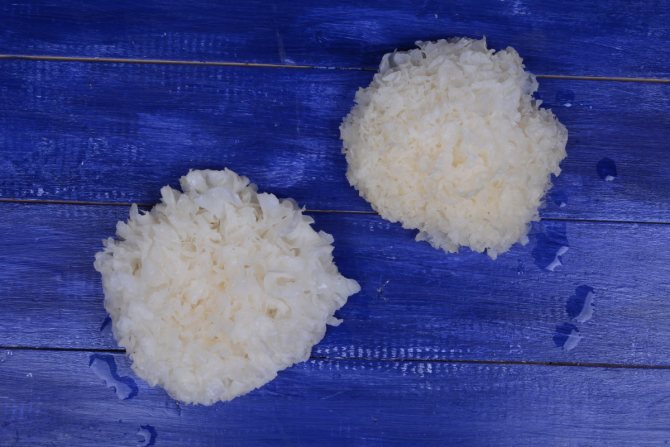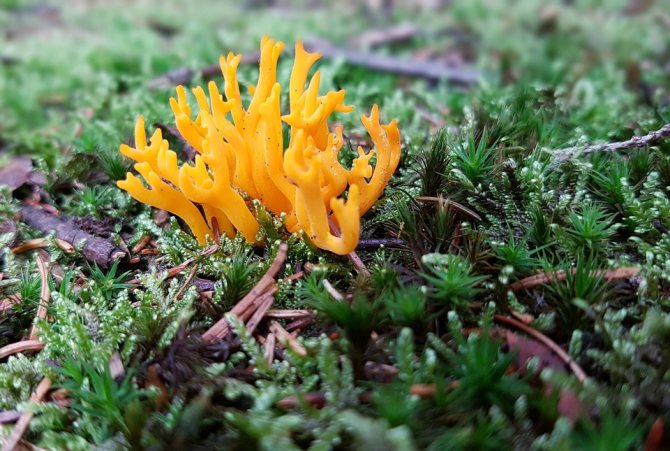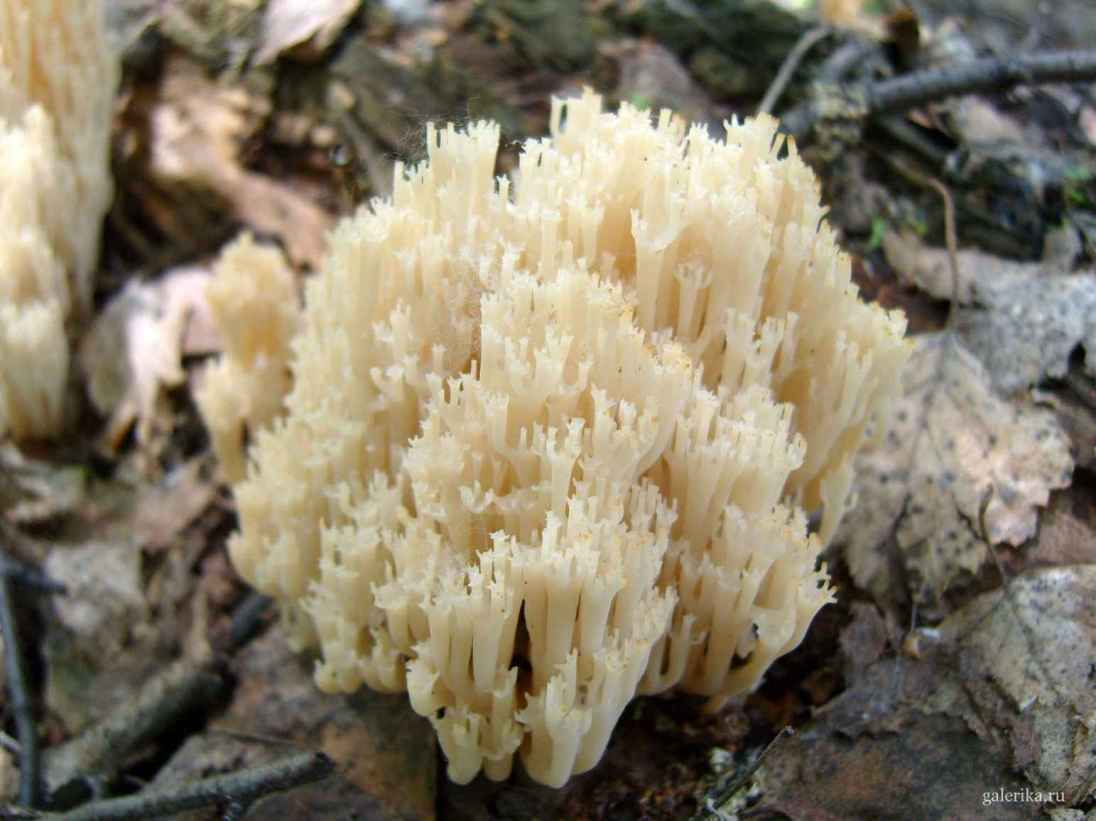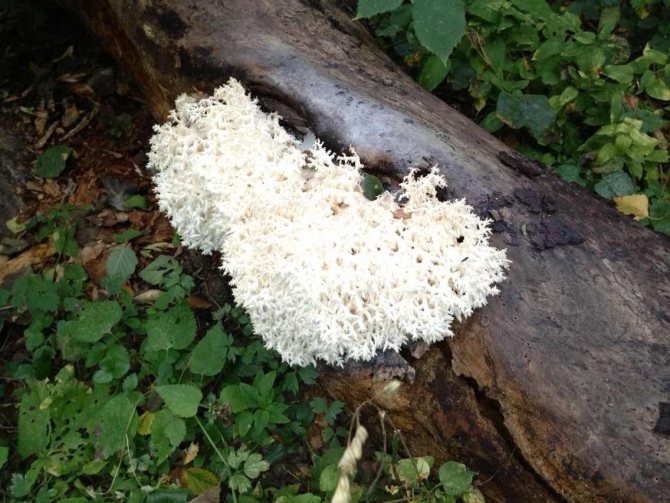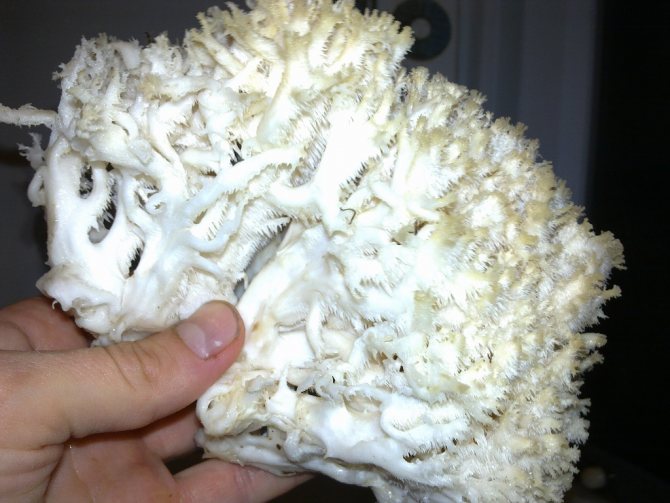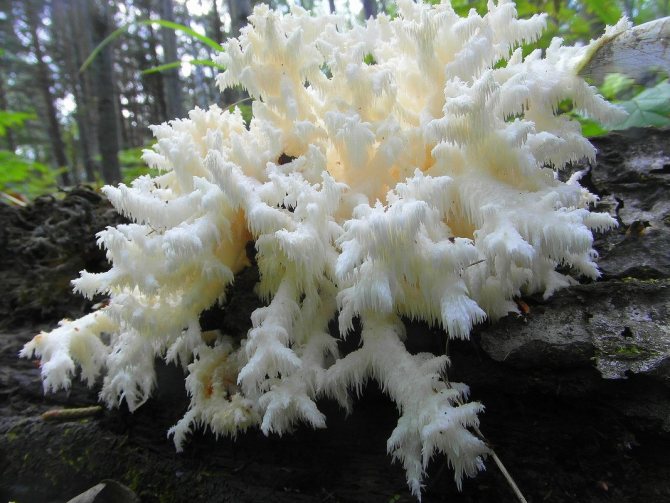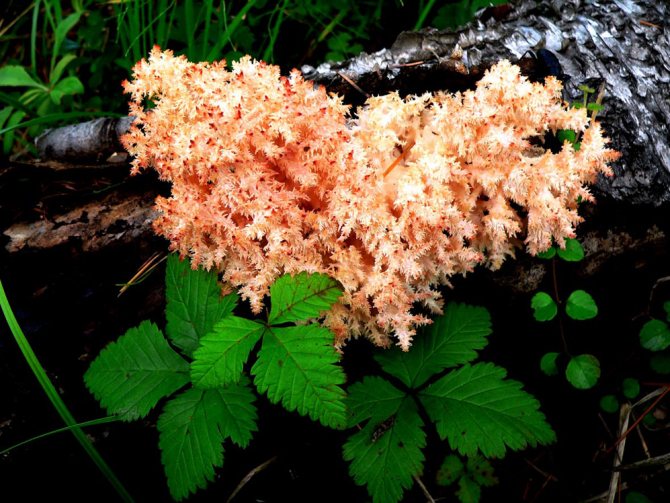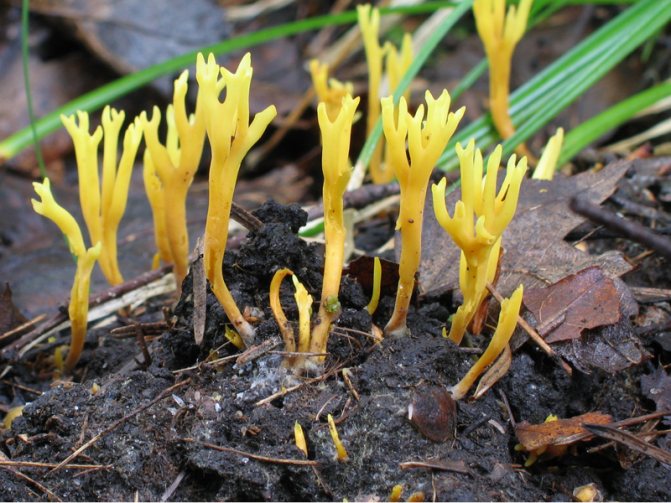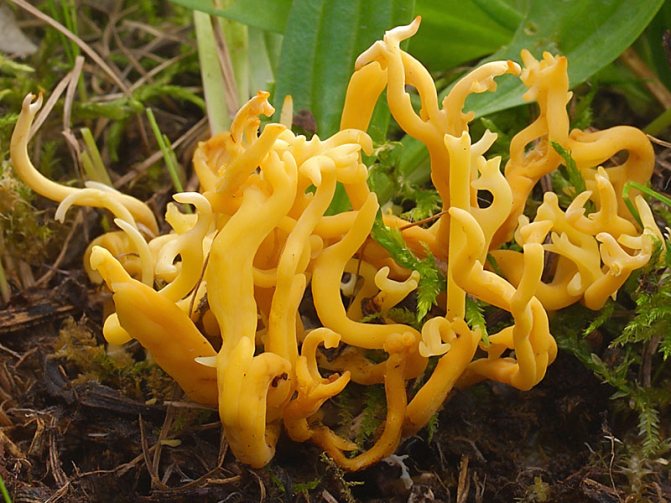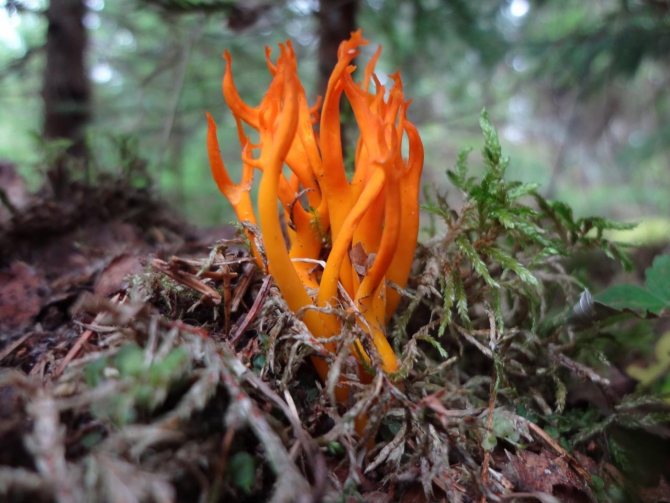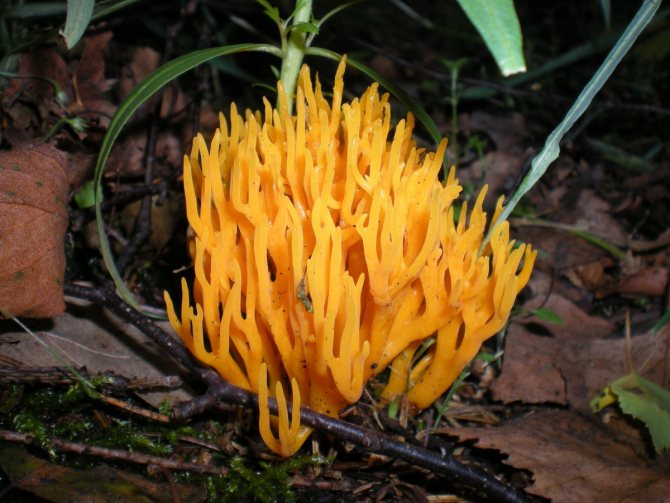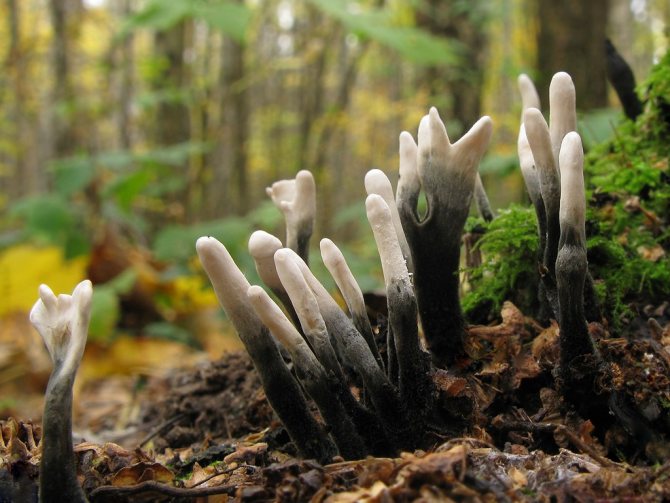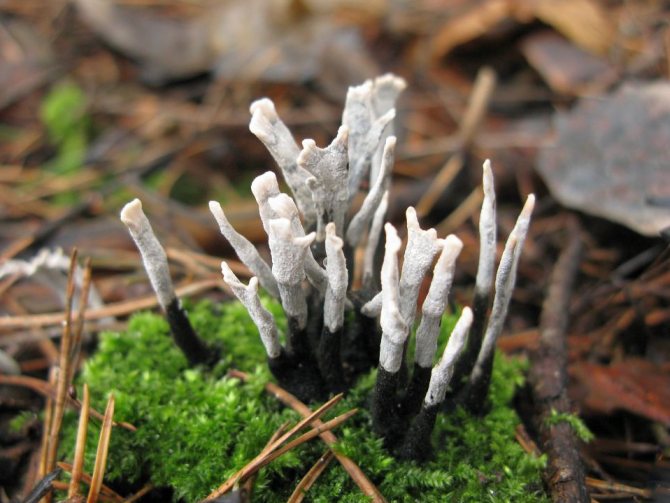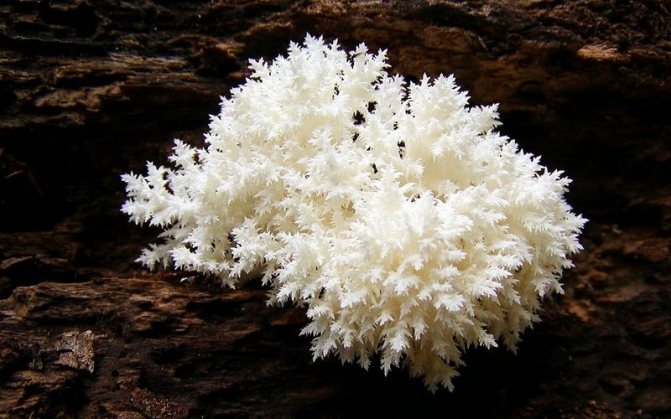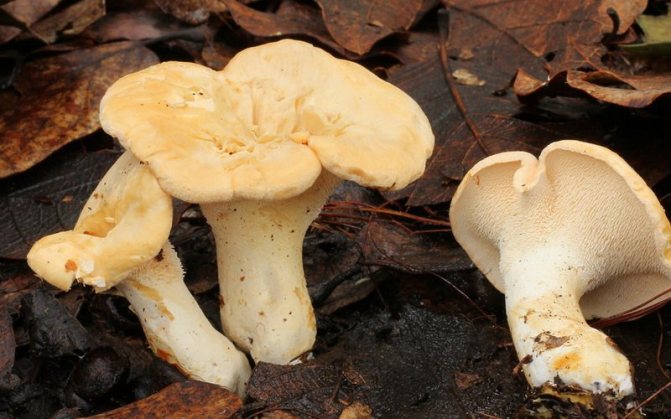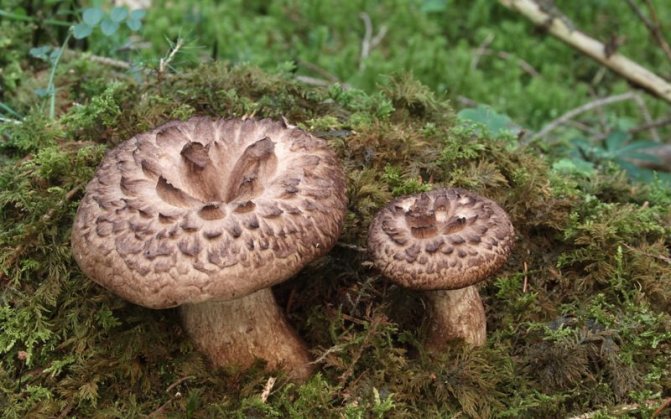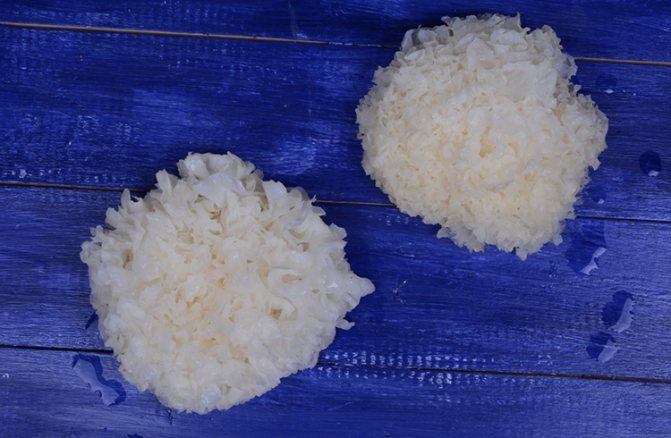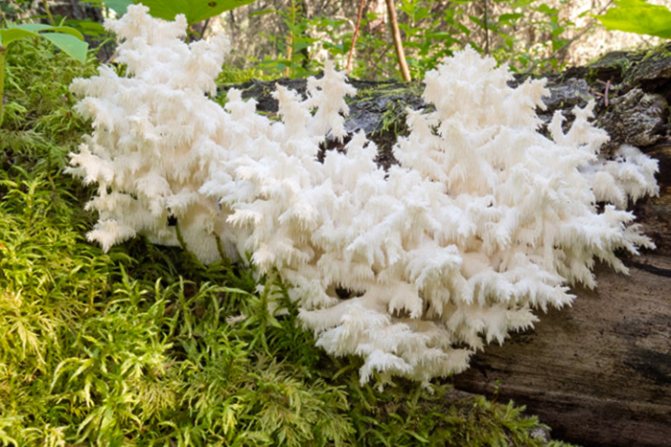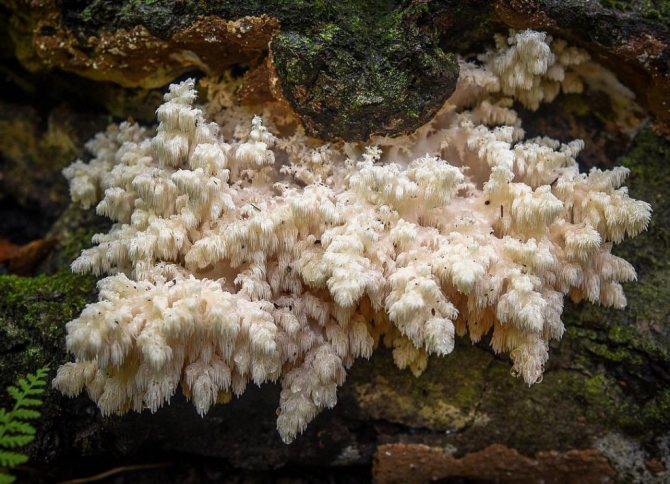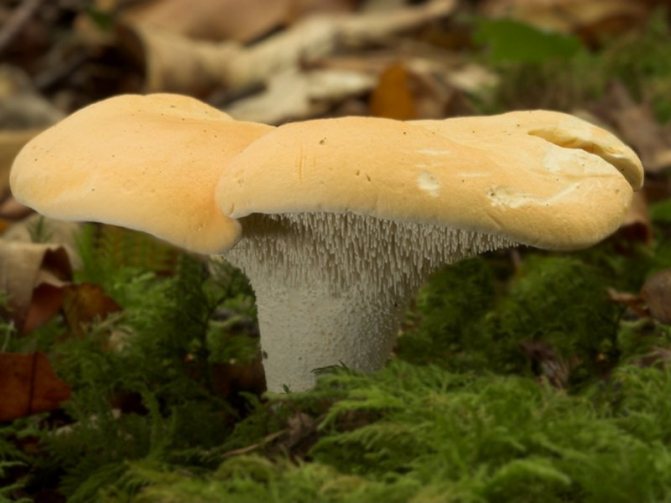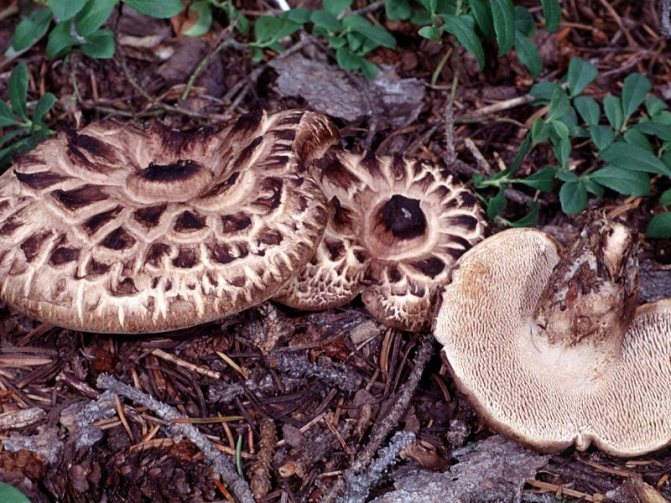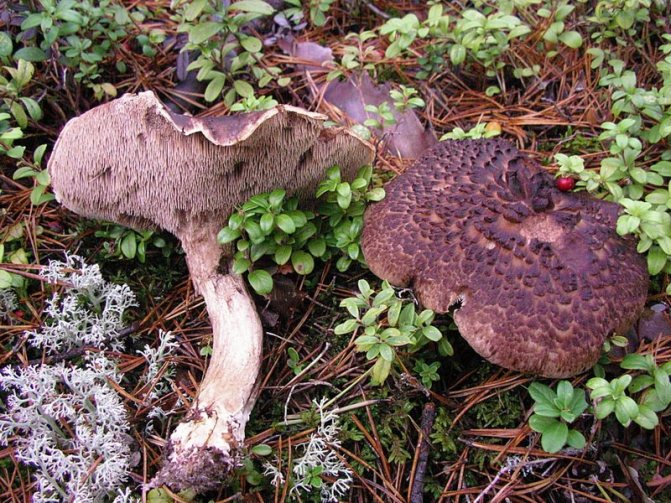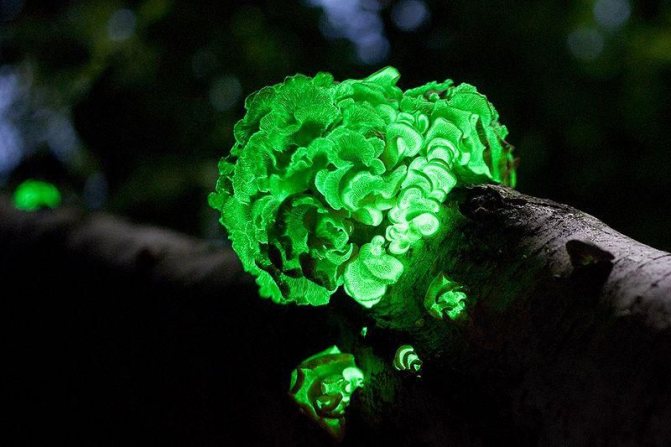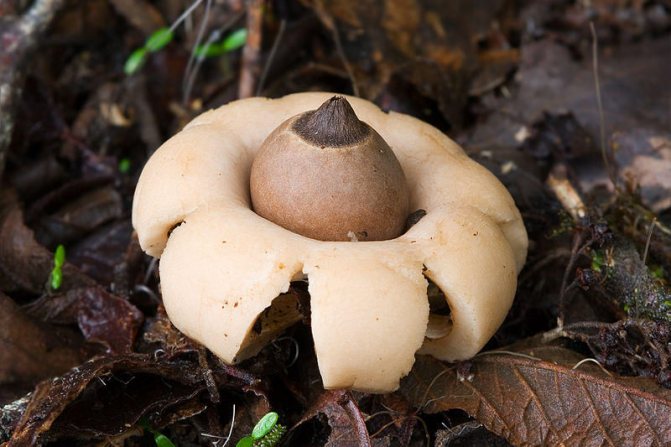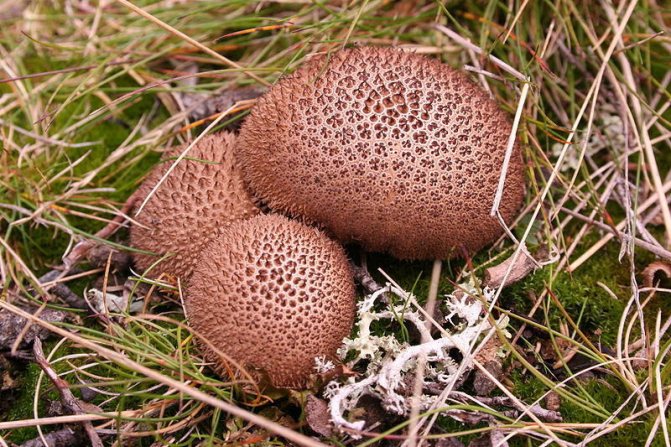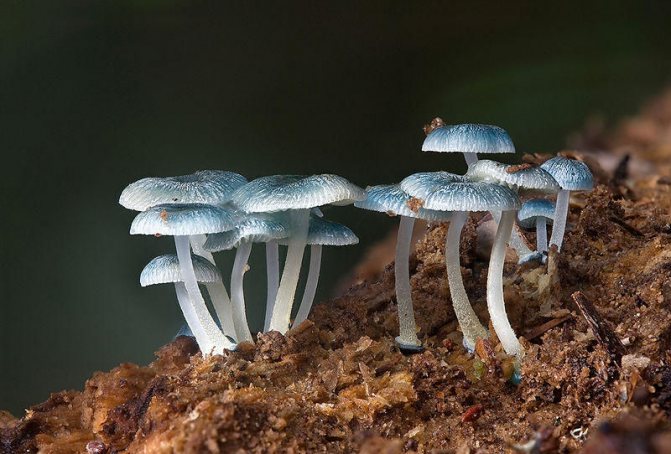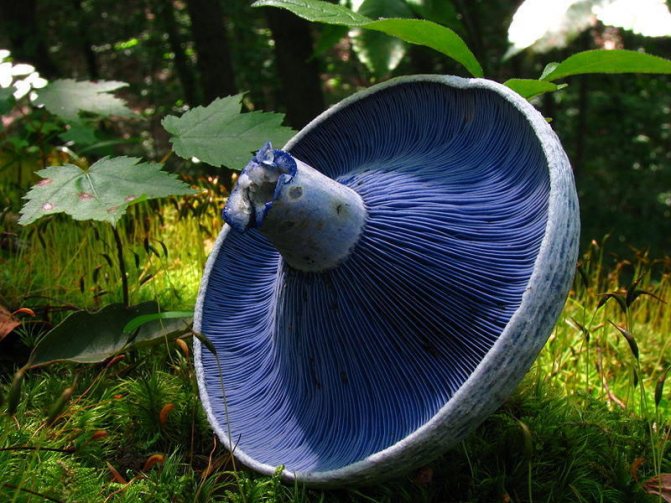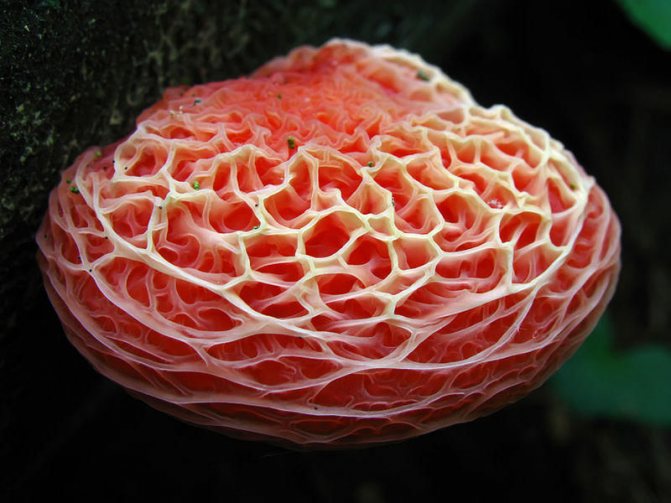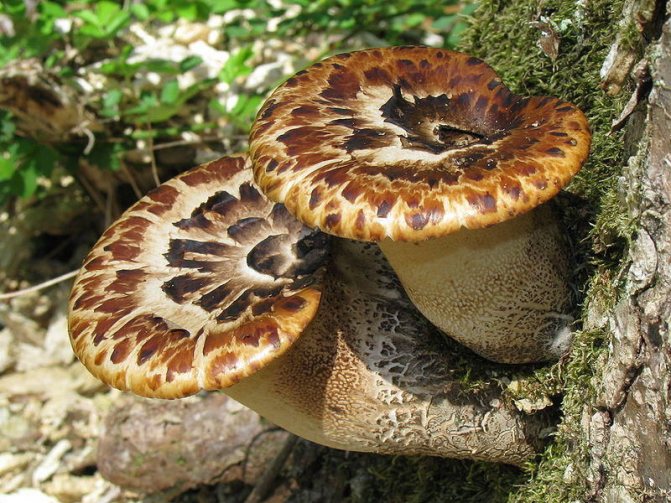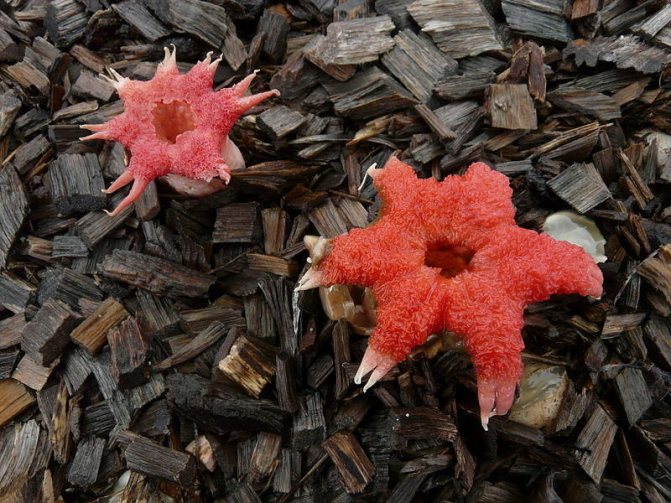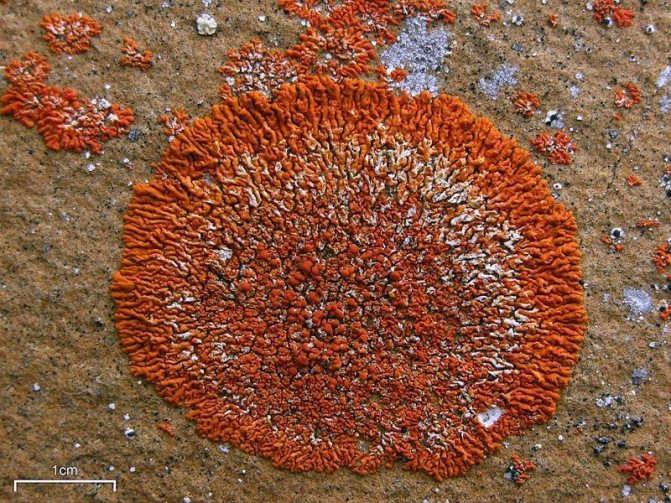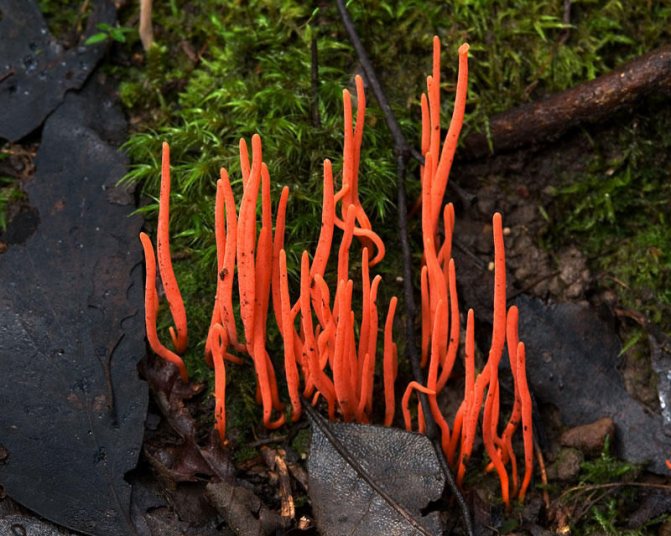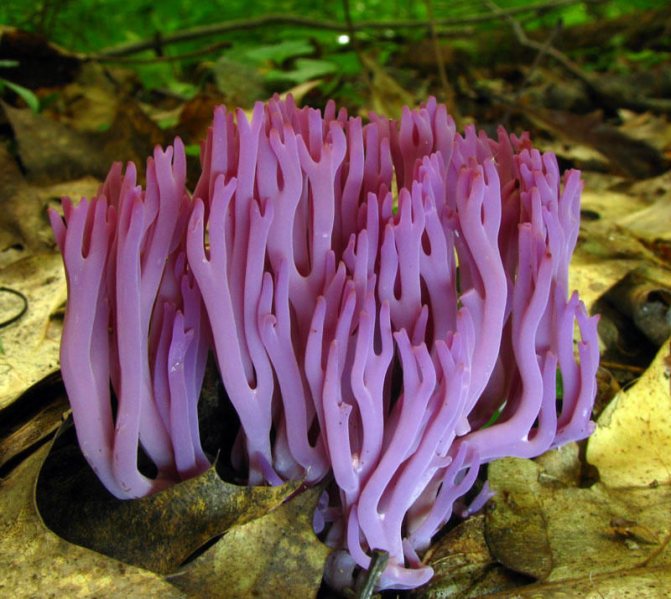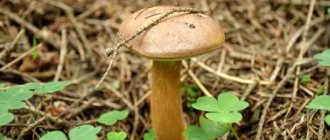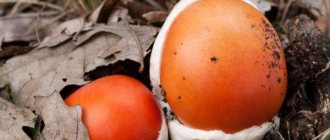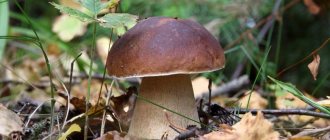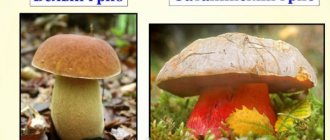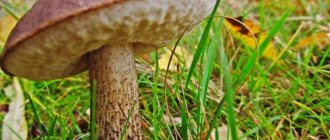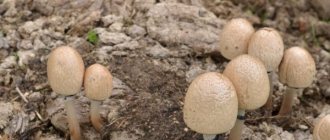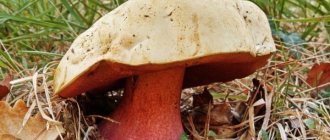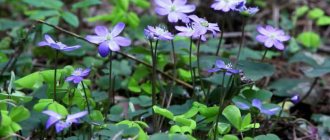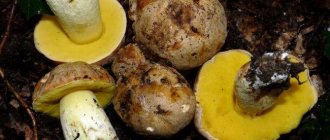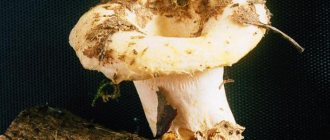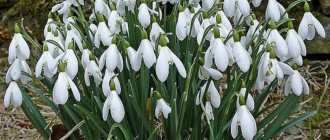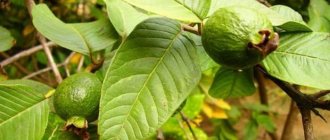Mushrooms
0
2346
Article rating
Coral mushroom belongs to the exotic representatives of the forest kingdom. It is listed in the Red Book of Russia. The organism grows in deciduous and mixed forests, creating mycorrhiza with beech, birch or pine, less commonly found on alder and linden. It is sometimes found on sick and weak plants.
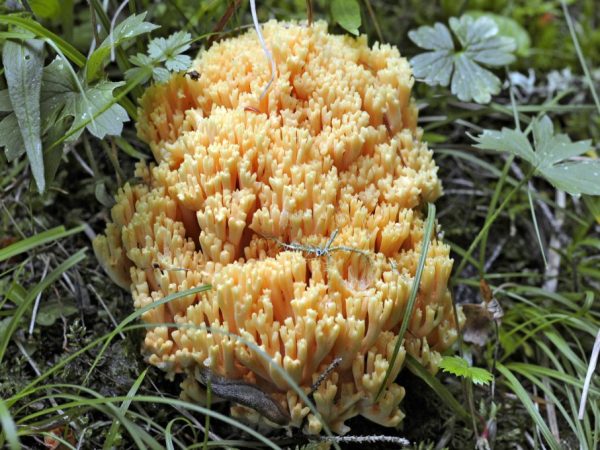
Features of the coral mushroom
Appearance and photos
Among all representatives, it has an exotic appearance - it has translucent lace twigs, and a shape resembling coral. Representatives of the variety are distinguished by an irregularly shaped body, the presence of a large number of winding twigs and processes, as well as many folds.
The size may vary depending on the species: from 2 to 15 cm. The surface is most often white or pale yellow, there are bright yellow specimens. A photo of a coral mushroom gives a more visual representation of its appearance, complementing the description presented.
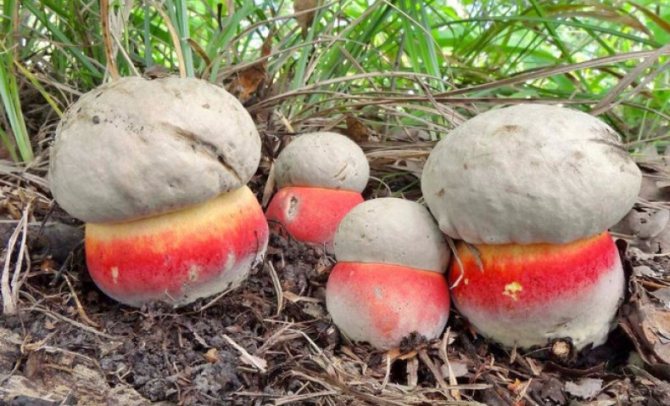

You may be interested in:
What does a satanic mushroom look like and is it edible or not (21 photos)? The Satanic mushroom, or Satan, is a rare species that mycologists classify as poisonous. The mushroom is considered ... Read more ...
Coral fungus morphology
The stem of the mushroom is massive and dense, deeply planted in the ground, has a white or yellowish tint. Its shape is cylindrical. The diameter is 7-10 cm. The pulp is fragile, light, dryish, has a neutral or herbal odor, and may have a bitter aftertaste.
The branches are pointed, tapering upwards, may have comb-tops. The fruit body is very branched and bushy. Depending on the species, the branches can be forked or fan-shaped. Some species may have a spherical fruiting body, consisting of many wavy plates. There are spores on one of the surfaces of the plates. The method of reproduction is through spore powder.
Eating
Not all species are intended for culinary use. The ones listed below are not eaten because of the pulp, the consistency of which is similar to rubber:
- Kalocera is sticky.
- Xilaria hypoxilone.
- Horn-shaped hornate.
The rest of the species are used in cooking, but only at a young age. Old mushrooms are very tough and not suitable for cooking.
Rules and places of collection
The area in which they can be found is mixed and coniferous forests. They grow in places with high humidity, most often not on soil, but on putrid stumps and wood, and are found on the branches of deciduous trees (linden, birch, aspen). They can grow both in groups and singly.
Note!
When collecting them, you must remember that you cannot destroy the root system. For safe collection, which will not lead to a decrease in the population, it is necessary to cut off only the aerial part with a knife, without touching the roots or pulling them out of the ground. It is preferable to go out into the forest for them in the early hours of the day before they heat up in the sun. Once harvested, they need to be processed and cooked as soon as possible.
Do not collect old and darkened specimens. In addition, if the summer is rainy, it is not recommended to collect and dry them: they will lose their taste and will release toxins.
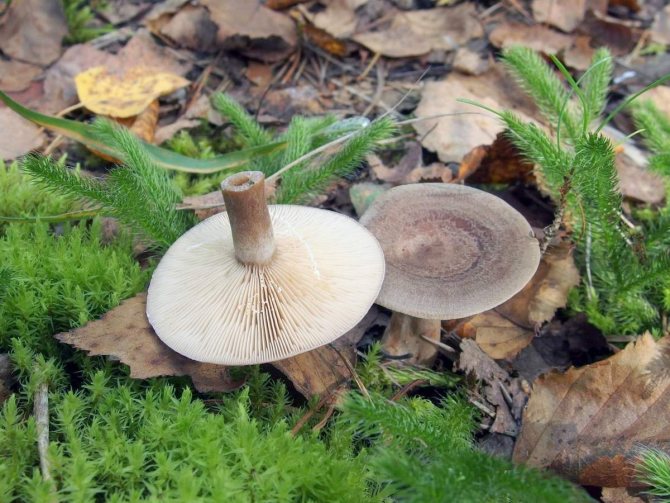

You may be interested in:
How to distinguish real mushrooms from false mushrooms (28 photos)? Ryzhiki is a popular forest delicacy in our country with an exquisite taste. They are not inferior in their gustatory qualities ... Read more ...
Potential harm
There are a number of restrictions for use, non-compliance with which can be harmful to health. These factors include children under 3 years of age, pregnancy and lactation.
Also, it is not recommended to use it at the same time as taking medications that reduce blood clotting. With the opposite effect, it has a neutralizing effect on anticoagulants.
It must be remembered that there is an individual hypersensitivity of the body to some substances. For some people, fucus tremella can be such a problematic product.
Types, their description and photos
There are several species of coral mushrooms that differ in appearance and taste. Coral mushrooms are most often white:
- Alpine blackberry. It is an edible organism, which has the following varieties: golden, yellow, reed, uviform. Most often found in coniferous forests, on spruce stumps, pines and firs.
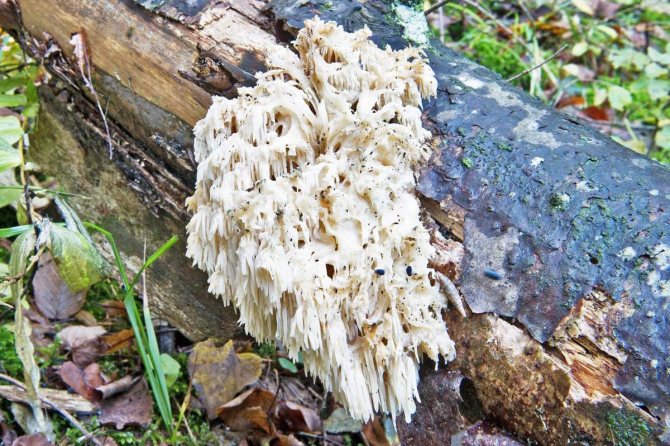

Alpine blackberry - Bear's paw. It features a surface covered with yellow spores, white marble-like flesh, a dichotomous structure and a slight herbal aroma. Its height reaches 20 cm, the central trunk produces 2 cylindrical processes.
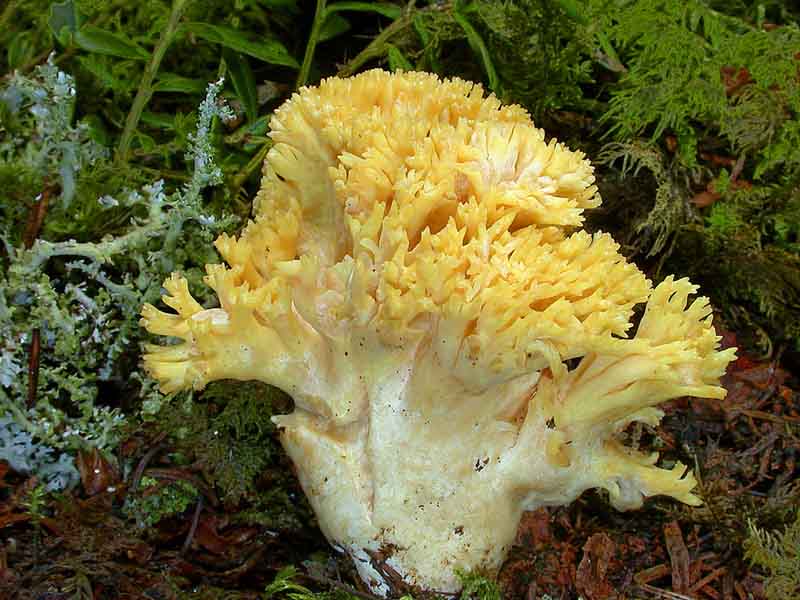

Bear paw - The horn is reed. It is most often found in ephedra. The height is no more than 10 cm, the color is most often pale yellow. The shape of the sprouts vaguely resembles the shape of the human tongue.
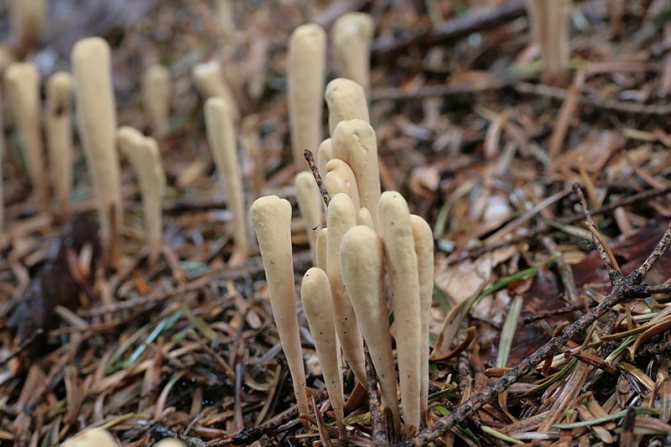

Reed horn - Wrinkled Clavulina. The outgrowths resemble the horns of an animal, their tips becoming blunt as they grow. The organisms reach 0.4 mm in diameter and 15 cm in height.
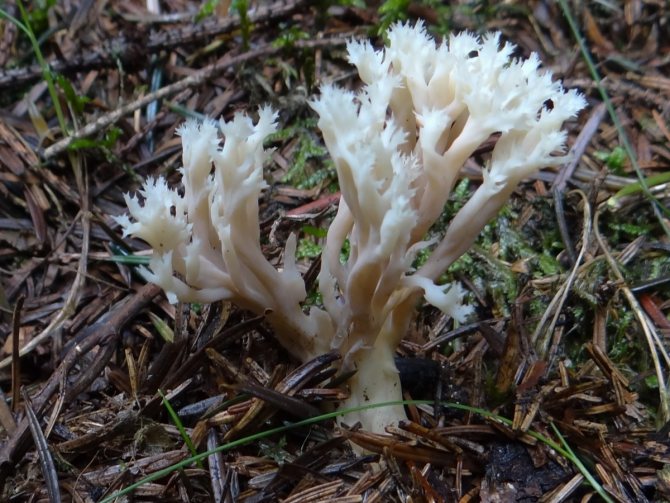

Wrinkled clavulina
Botanical characteristic
Coral mushrooms belong to the genus Hericium. All of its representatives have similar structural characteristics and a description of their appearance:
- bushy fruiting body resembling algae or coral;
- gelatinous dense structure;
- the presence of outgrowths in the form of "thorns" with a fragile structure up to 1 cm in size;
- hollowness of "branches", the length of which is from 8 to 30-40 cm;
- scaly base of the mushroom leg;
- the color is predominantly transparent, white or cream.
The mushroom pulp is transparent white or with a slight pink tint. Under mechanical action (pressure), the mushrooms turn red. The structure of young specimens is delicate and elastic; over time, it acquires rigidity and becomes firm. Most of these mushrooms are odorless, but some have a rich aroma.
The main range of the fungus covers Asian and Central American countries, Australia and the Pacific Islands, where it grows almost all year round.
Coral mushroom grows mainly in warm subtropics on fallen trees and trunks of deciduous trees. Most species lead a parasitic lifestyle on other fungi, after invading the mycelium of which they begin to actively develop their own fruiting body.
On the territory of Russia, it is found in the Far Eastern and Caucasian regions, in the Urals and in Siberia, in the Krasnodar Territory. Unlike the subtropics in the north, the fruiting period lasts from July to September, some species bear fruit in the second half of October.
Difference from false, inedible mushrooms
There are several species that look like a coral mushroom, but are not eaten. The list of such types includes:
- Kalocera gummy. The fruiting body of Calocera is bushy, but weakly branched, colored dark yellow or orange. Grows both singly and in groups, and is found in forests from July to October. The species is inedible due to the viscous and rubbery pulp.
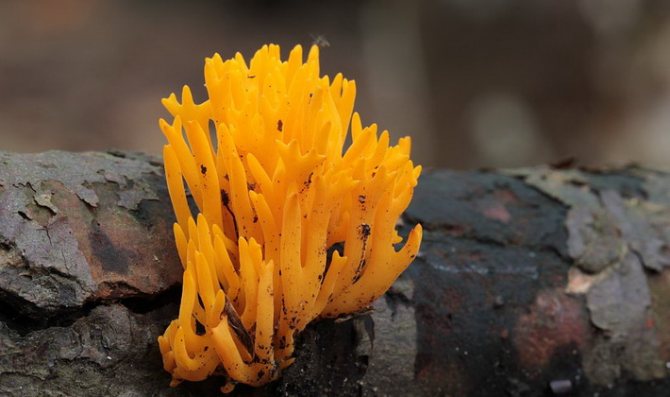

Kalocera sticky - Xilaria hypoxilone. Representatives of the species most often growing in bunches are characterized by pointed, bifurcated upward branches, white flesh, weak branching of the fruit body. Xilaria's pulp is too hard to be used in cooking.
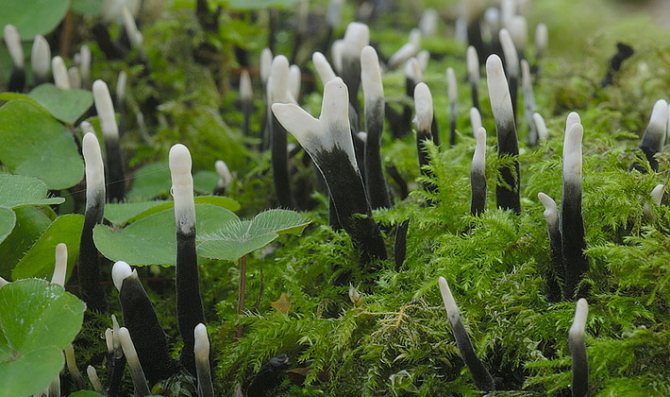

Xilaria hypoxilone - Horn-shaped hornbeam. The fruit body is fragile, covered with spores, can have a different color: from gray-yellow to bright orange, and its base is painted white. Most widespread in forests with high levels of air humidity. The pulp is brittle, has a mealy smell.
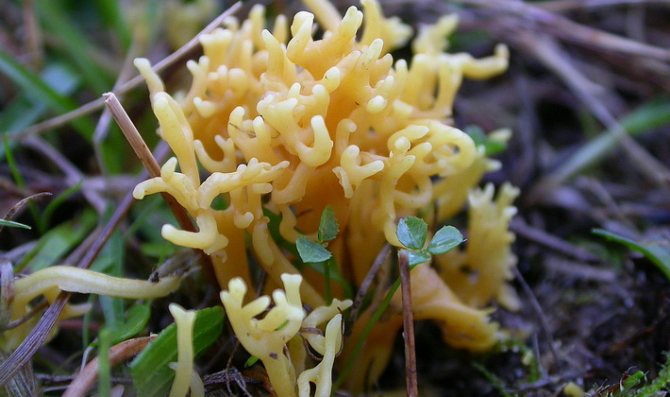

Horn-shaped hornbeam
Useful properties and restrictions to use
Ice mushrooms are rich in vitamins, therefore they are often used in areas such as medicine and cosmetology. In medicine, they act as natural antibiotics and antidepressants, they are used to make medicines, thanks to which antibodies are produced in the body that destroy viruses and bacteria.
In addition, they are recommended for use in Alzheimer's disease. Chinese medicine includes their use as a remedy for tumors and a source of vitamins during the recovery period after chemotherapy. These mushrooms are also recommended for eating with nervous disorders and immunodeficiency.
Other beneficial properties are represented by the ability to:
- lowering cholesterol levels;
- relieving inflammation;
- reducing exposure to radiation;
- elimination of toxins;
- protection of the liver.
Despite the many positive effects of these mushrooms, there are a number of restrictions on their consumption:
- Propensity for allergic reactions.
- Use in a mono-diet. Due to the high protein content in this product, metabolic changes and disruption of oxidative processes are possible. Their use in the diet should be moderate.
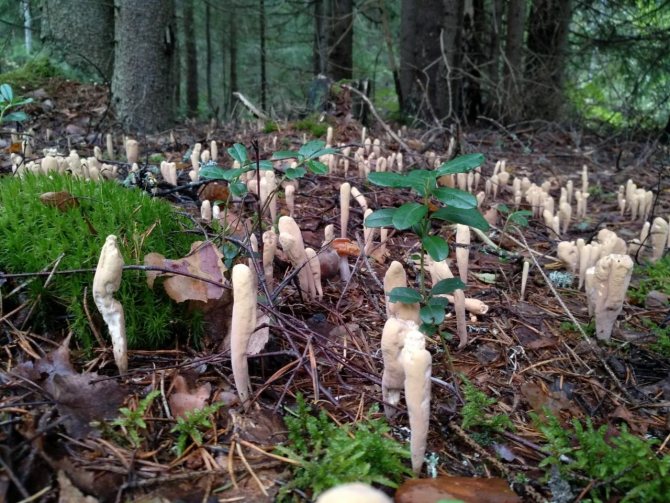

Reed horn - It is undesirable to eat mushrooms collected in an area with an unfavorable ecological situation. They easily absorb harmful substances, so you should not collect them and use them in cooking.
- They are categorically contraindicated for use by people with pancreatitis, dysbiosis and individual intolerance. They are not desirable in the diet of children under 14 years of age, since their enzymatic system has not yet been fully formed.
The maximum frequency of using mushrooms in the diet for a healthy person is three times a week in moderation.
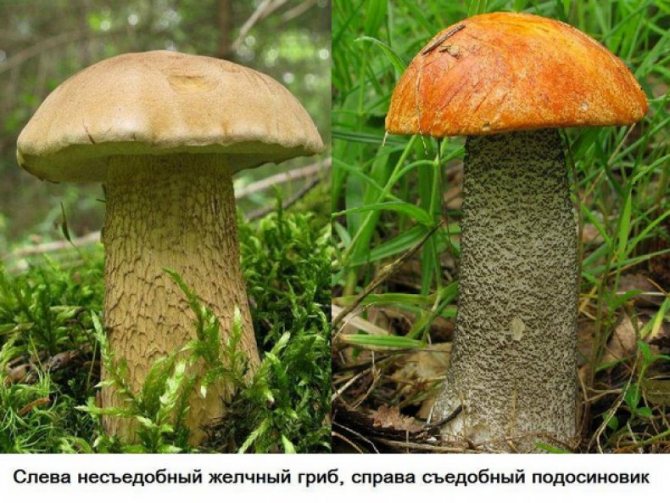

You may be interested in:
What does greenfinch mushroom look like and its description (16 photos) The Ryadkovy family (or Tricholomovs) has up to 2500 species of mushrooms, among which the mushroom is very well known ... Read more ...
Use in cosmetology
Cosmetologists consider practical use as useful properties and use it as a means that moisturizes the skin and can make it soft and elastic.
Natural polysaccharides easily penetrate into the deep layers of the epidermis and have a rejuvenating effect from the inside, retaining moisture in the cells.
():
The acidic polysaccharide extracted from the fruit bodies of the tremella is similar in its physical and chemical characteristics to hyaluronic acid. Its excellent moisturizing effect, as well as its high water retention capacity, have been extremely appreciated by detox product companies for regular use in urban and dry air environments.
Fucus tremella has the only strict contraindication - individual hypersensitivity to this product. Tremella is included in anti-age and anti-stress products for the skin, and now in hair protection products. The optimal working concentration of a component in the finished product is considered to be in the range of 0.02-0.5%.
The tremella extract used in cosmetology is stored exclusively in powder form.
Recipes and cooking features
There are simple recipes that do not require large expenses and high culinary skills. For example:
- Snack. For its preparation, in addition to mushrooms in the amount of 70 g, you will need sweet peppers, one fresh cucumber, sesame oil, a clove of garlic, three tablespoons of vinegar or lemon juice. Chop the cucumber, pepper and garlic very finely. Mushrooms must be poured with cold water for 15-20 minutes, salt, and then left in boiling water for 5 minutes.
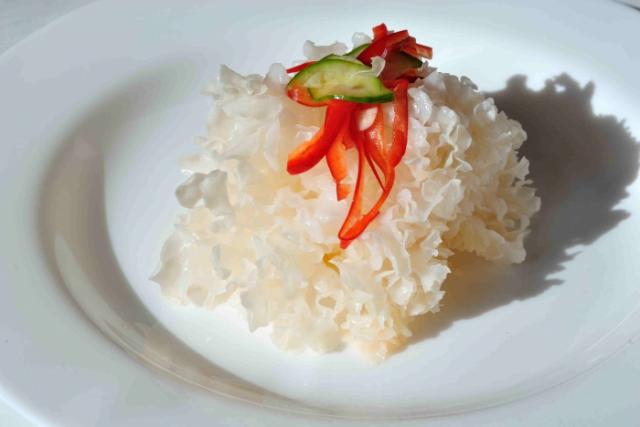

Coral mushroom snack
When they are ready, you need to cut off their yellowish part, which is on the back side, with a knife. After all the ingredients need to be mixed, add lemon juice and oil, and leave to infuse for an hour. This appetizer can be eaten with meat, squid, crabs and shrimps. - Coral mushrooms with meat. To prepare the dish, you will need 100 g of mushrooms, green and onions (3 feathers and 1 onion), 2-3 cloves of garlic, salt and pepper to taste, a tablespoon of vegetable oil, a teaspoon of sesame oil, meat of your choice - pork, chicken or beef. Boil the mushrooms washed in cold water in boiling water for 2-3 minutes, then discard them in a colander, rinse with cold water, cut into equal parts.
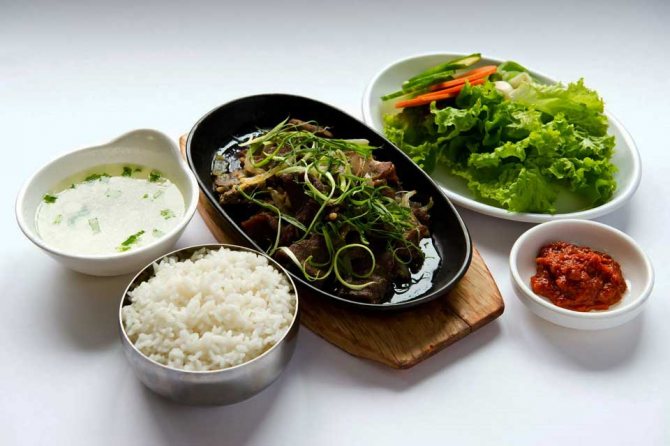

Coral mushrooms with meat
Then put them in a deep bowl, sprinkle with pepper and salt. Cut the meat into small pieces, season with salt and pepper, let stand for 10 minutes. During this time, chop the onion and garlic, heat the olive oil in a skillet, and fry the meat until golden brown. Then add the mushrooms and continue frying for another 5 minutes. Then remove food from heat, sprinkle with green onions and season with sesame oil. This dish is served with any side dish or as an addition to rice.

